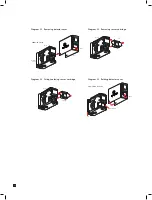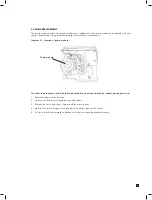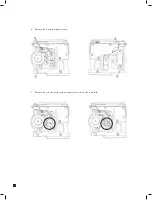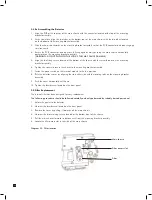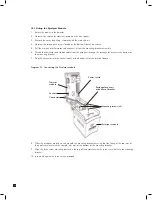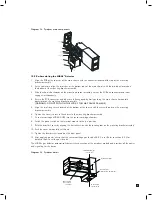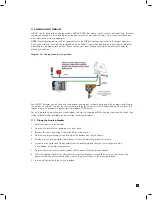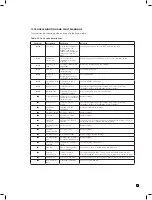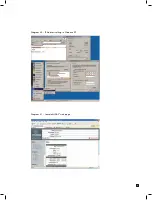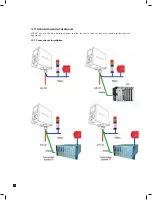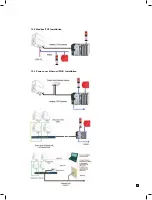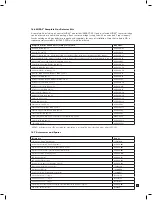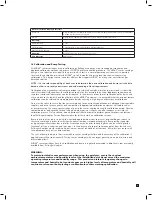
54
13 REFLEX
®
MIDAS
®
uses patented Zellweger Analytics technology to continuously monitor the health check status of specific
electrochemical cells and alert the user if a cell enters a variety of fault conditions (such as open or short circuit
etc.) which would leave the cell unable to detect gas and raise an appropriate alarm signal.
REFLEX
®
overcomes this unseen failure mode by applying periodically a special electronic pulse to the cell and
reviewing the ‘echo’ from the cell as it responds to the applied signal. If the cell is deteriorating within certain
pre-set limits based on the received signals then MIDAS
®
will decrease the REFLEX
®
sampling interval in order
to establish the actual viability of the cell. Within a relatively short time, MIDAS
®
will be able to alert the user via
fault codes that the electrochemical cell is likely to be requiring replacement and is possibly unable to correctly
detect gas.
REFLEX
®
is not required for pellistors or oxygen electrochemical cells as these sensor cartridges provide alternative
electronic means to indicate open circuits and other sensor cartridge damage issues.
14 INTERNAL WEB SERVER
The MIDAS
®
gas detector unit utilizes an Ethernet port with the TCP/IP protocol as standard. The MIDAS
®
can
function as a HTML web page server and these web pages can be viewed on external computer equipment (PC,
PocketPC etc.). These web pages replicate the user interface on the front panel of the MIDAS
®
in a more flexible
and friendly format for diagnostic and data entry purposes. The web pages also contain additional features not
available via the keypad.
This procedure explains how to view web pages for a single MIDAS
®
which is connected to a single PC only.
In this example the MIDAS
®
is separately powered by 24 VDC. Of course it is possible to connect hundreds of
MIDAS
®
units to an Ethernet network which is part of the end user’s process LAN and more information may be
required from the local IT department and Zellweger Analytics as appropriate.
14.1 Physical Network Components
The Ethernet 100BaseT physical network is intended to connect computers to other computers through hubs.
For this reason, a MIDAS
®
cannot communicate directly with a PC using a standard cable. This problem can
be overcome by using a special “cross-over” Ethernet cable or by using a ‘hub’ or ‘switch’ and two standard
(straight through wire connections) Ethernet cables. An example of a cross-over cable is the Belkin A3X126
family. An example of an Ethernet switch is the Linksys SD205. These or similar parts are commonly available
from local IT equipment suppliers.
14.2 Internet Settings
Communications requires knowledge of the IP address and netmask of both the MIDAS® and the PC. Unless
the MIDAS® is connected to a large network with a DHCP server, the addresses must be set manually. To view
or set the IP address of the MIDAS
®
, see section 8.2.6. The procedure for setting the IP address of a PC is
detailed in the following example using a PC loaded with Microsoft™ Windows XP and Internet Explorer version
5.0 or higher as illustrated by Diagram 40. In the usual case the netmask for both computers should be set to
255.255.255.0. The most-significant three bytes of the IP address must be identical and the least-significant byte
must be unique. For example, if the IP address of the MIDAS
®
was set to 169.254.60.1 then an appropriate IP
address for the PC would be 169.254.60.42.
14.3 Running the Web Browser
Start Microsoft™ Internet Explorer or similar web browser. Set the URL to “http://xxx.xxx.xxx.xxx” where the “xxx”
fields are replaced with the IP address of the MIDAS
®
. A screen similar to Diagram 41
.
should be displayed. The
status and configuration of the MIDAS
®
can be viewed and set by clicking on the appropriate links.



